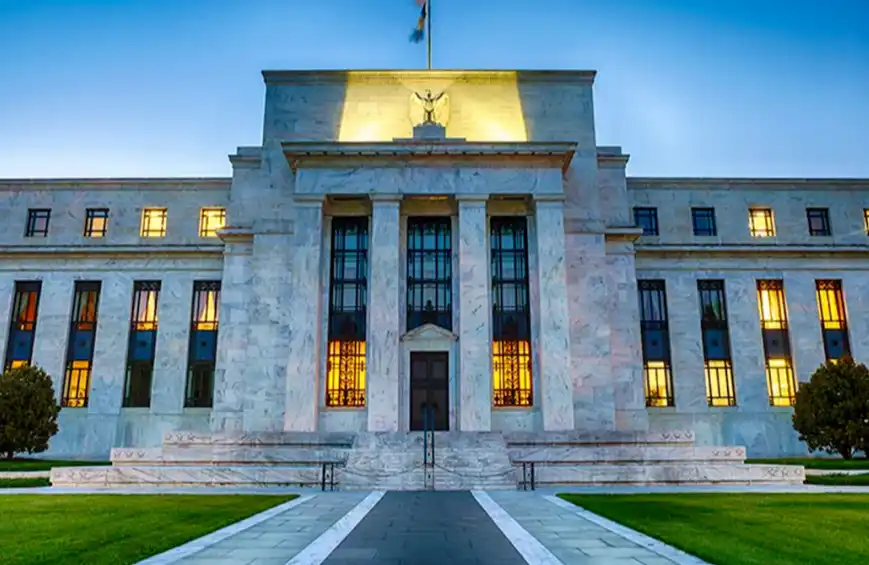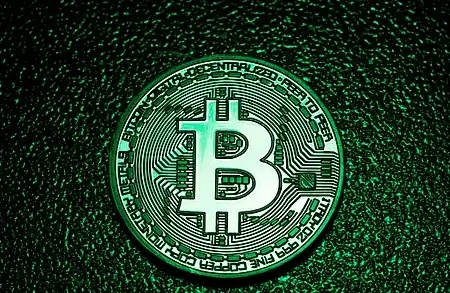What are the key takeaways from the Federal Reserve's latest Fintech conference?
October 21, Washington D.C. The conference room at the Federal Reserve headquarters was full of people who were once viewed as troublemakers in the financial system. The founder of Chainlink, the CEO of Circle, the CFO of Coinbase, the COO of BlackRock, along with Federal Reserve Governor Christopher Waller, sat face to face, discussing stablecoins, tokenization, and AI payments.
This was the Federal Reserve's first payment innovation conference. The conference was not open to the public but was live-streamed. The agenda listed four topics: the integration of traditional finance and digital assets, the business model of stablecoins, the application of AI in payments, and tokenized products. Behind each topic lies a market worth trillions of dollars.
In his opening remarks, Waller said, "This is a new era for the Federal Reserve in the payments field, and the DeFi industry is no longer viewed as suspicious or ridiculed." After this statement circulated in the crypto community, Bitcoin rose by 2 points that day. In his opening address, Waller also said, "Payment innovation is developing rapidly, and the Federal Reserve needs to keep up."
The payment innovation conference consisted of four roundtable discussions, and Dynamic Beating summarized and organized its content. The following are the key topics and content of this conference:
Federal Reserve's "Slimmed-Down Master Account"
The most important thing proposed by Waller was a concept called the "Slimmed-Down Master Account."
The Federal Reserve's master account is the credential for banks to access the Federal Reserve payment system. With this account, banks can directly use payment rails such as Fedwire and FedNow without intermediaries. However, the barrier to entry for the master account is high, the approval process is lengthy, and many crypto companies have applied for years without success.
Custodia Bank is a typical case. This crypto bank from Wyoming started applying for a master account in 2020, but it was delayed by the Federal Reserve for over two years, eventually leading to a lawsuit against the Federal Reserve. Kraken has also encountered similar issues.
Waller mentioned that many payment companies do not need all the functions of the master account. They do not need to borrow from the Federal Reserve, have daytime overdrafts, they only need access to the payment system. Therefore, the Federal Reserve is exploring a "slimmed-down" version to provide these companies with basic payment services while controlling risk. Specifically, this account does not pay interest, may have a balance limit, cannot overdraft, cannot borrow, but its approval process will be much faster.

Federal Reserve Governor Waller
What does this proposal mean? Stablecoin issuers, cryptocurrency payment companies can directly access the Fed's payment system without relying on traditional banks anymore. This will significantly reduce costs, improve efficiency. More importantly, this is the Fed's first formal recognition that these companies are legitimate financial institutions.
Dialogue 1: Collision of Traditional Finance and Digital Ecosystem
The first thematic discussion is on the "Integration of Traditional Finance with the Digital Asset Ecosystem." The host is Rebecca Reddig, Chief Legal Officer of Jito Labs, with Sergey Nazarov, Co-Founder of Chainlink, Jackie Reses, CEO of Lead Bank, Michael Shaulov, CEO of Fireblocks, and Jennifer Bakh, Global Head of Fund Services and Depositary Receipts at BNY Mellon Bank, on stage.

From left to right: Rebecca Reddig, Chief Legal Officer of Jito Labs, Sergey Nazarov, Co-Founder of Chainlink, Lead Bank CEO Jackie Reses, Fireblocks CEO Michael Shaulov, Jennifer Bakh, Global Head of Fund Services and Depositary Receipts at BNY Mellon Bank
· Interoperability as the Biggest Barrier to Integration
Sergey Nazarov, Co-Founder of Chainlink, bluntly stated that interoperability is currently the biggest issue. There is a lack of unified compliance standards, authentication mechanisms, and accounting frameworks between assets on the blockchain and traditional financial systems. As the cost of creating a new chain decreases, the "fragmentation" of chains is intensifying, making the need for unified standards more urgent.
He called on the Fed to make the payment system interoperable with stablecoins and tokenized deposits. He stated that the payment sector represents the buyer in the digital asset economy, and if the Fed can provide a clear framework for risk management, the US can maintain its lead in global digital payment innovation.
He pointed out that it was unimaginable a year ago to discuss "regulated DeFi" at the Fed, which in itself marks a positive trend. Nazarov predicted that in the next 2 to 5 years, a hybrid model will emerge: a "Regulated DeFi Variant," that automates compliance processes through smart contracts.
· Traditional Banks Are Not Yet Ready, Core Bottlenecks Are Awareness and Talent
Lead Bank CEO Leisis believes that even with a blueprint for the convergence of traditional finance and the digital ecosystem, most banks are not prepared to handle this integration at all. Traditional banks lack wallet infrastructure, systems to handle cryptocurrency deposits and withdrawals, and more importantly, they lack "talent within the bank who understand blockchain products."
She further summarizes the issue as a gap in cognition and capability, emphasizing that the biggest barrier is not the technology itself, but rather the "knowledge and execution capabilities of banking core teams." These core teams, due to their lack of understanding and ability to assess emerging blockchain products, are completely unaware of how to effectively regulate or supervise these new businesses.
This unpreparedness is particularly evident at the retail level. Leisis mentioned that while KYC systems for institutions are currently quite mature, retail users still find it difficult to access these tools. This exposes an awkward reality: even if banks are willing to participate, their service capability is limited to a few institutional clients, still far from widespread application.
·Industry Needs a Practical Regulatory and Risk Control Framework
This conversation also touched on the issue of AI fraud, leading to a discussion on the "reversibility" of on-chain transactions. Traditional wire transfers can be reversed, but blockchain transactions are final, posing a significant challenge on how to meet regulatory requirements for a reversible process while maintaining on-chain finality. Leisis called on regulators to proceed "slowly and steadily" because "innovation is always great until your own family gets scammed."
Fireblocks CEO Michael Shaulov then shifted the discussion to deeper economic and regulatory issues. He pointed out that stablecoins might reshape the credit market, which could in turn affect the Fed's monetary policy. He also highlighted a specific regulatory gray area: putting a bank's "tokenized deposits" on a public blockchain, where the bank's responsibility is still unclear, posing a key issue hindering bank projects. He called for further research on how digital assets are changing bank balance sheets and the role of the Fed in them.
Finally, Jennifer Bach from Bank of New York Mellon presented an "expectations wishlist," listing four items that traditional banks hope regulators will prioritize: enabling 24/7 payment systems, setting technical standards, strengthening fraud detection, and establishing liquidity and redemption frameworks for stablecoins and tokenized deposits.
Discussion Two: The Trouble and Opportunity of Stablecoins
The second theme of discussion focused on stablecoins. The host was Kyle Samani, Co-Founder of Multicoin Capital, with Paxos CEO Charles Cascarilla, Circle Chairman Jeremy Allaire, Fifth Third Bank CEO Tim Spence, and DolarApp CEO Fernando Tres sitting on the stage.
From left to right are Multicoin Capital co-founder Kyle Samani, Paxos CEO Charles Cascarilla, Fifth Third Bank CEO Tim Spence, DolarApp CEO Fernando Tres, Circle Chairman Jeremy Allaire
· Strong Demand and Use Cases for Compliance-Focused Stablecoins
In July of this year, the U.S. passed the "GENIUS Act," which requires stablecoin issuers to hold 100% of high-quality reserve assets, primarily cash and short-term U.S. Treasuries. After this act took effect, the percentage of compliance-focused stablecoins rose from less than 50% at the beginning of the year to 72%. Among them, Circle and Paxos were the biggest beneficiaries. USDC's circulating supply reached $65 billion in the second quarter of this year, accounting for 28% of the global market, with a year-over-year growth rate exceeding 40%.
In terms of use cases, Spence, representing banks, provided the most practical view. He believes that the most powerful and direct use case for stablecoins is "cross-border payments" because it effectively addresses the pain points of traditional settlement delays and currency risks. In contrast, the programmability required for AI agents in trade is a longer-term future.
Tres from DolarApp also supplemented from a Latin American perspective, stating that for countries with unstable local currencies, stablecoins are not speculative tools but essential means of preserving value. He reminded the U.S.-centric decision-makers present that the use cases for stablecoins are much broader than they imagine.
· The User Experience Bottleneck of "Dial-Up Internet"
Cascarilla pointed out the biggest growth pain point in the industry: user experience.
He compared current DeFi and cryptocurrency to early "dial-up internet," stating that DeFi and cryptocurrency have not been fully abstracted. He believes that only when blockchain technology is well abstracted and becomes "invisible," will mass adoption occur. "No one knows how a phone works... but everyone knows how to use it. Cryptocurrency, blockchain, stablecoins need to be like that."
Cascarilla praised companies like PayPal, believing that their integration of stablecoins into traditional finance is an early sign of this usability shift.
· Threats to the Banking Credit System
Allaire from Circle and Spence from Fifth Third Bank also participated in the discussion, representing the traditional banking position, which in itself is a signal.
Spencer first attempted to reshape the identity of banks by proposing to use "ScaledFi" (Scalable Finance) to replace "TradFi" (Traditional Finance), stating that the bank's "old" identity "is the least interesting thing."
He also pointed out that stablecoins will not deplete the bank's "capital," but will deplete "deposits." The real threat is that if stablecoins are allowed to bear interest (even if disguised as "rewards" similar to Coinbase's USDC subsidy), it will pose a significant threat to the formation of bank credit.
The core function of a bank is to absorb deposits and provide loans (i.e., credit creation). If stablecoins, with their flexibility and potential interest, siphon off a large amount of deposits, the bank's lending capacity will shrink, thus threatening the entire economic credit system. This is similar to the impact of early Money Market Mutual Funds (MMMFs) on the banking system.
Dialogue Three: AI Fantasy and Reality
The third session discussed the topic of AI. The host was Matt Marcus, CEO of Modern Treasury, and on stage were ARK Invest's CEO WoodSis, Coinbase's CFO Alessia Haas, Stripe's Head of AI Emily Sands, and Google Cloud's Web3 Strategy Lead Chad Weinman.
·AI is Opening the "Agent Business" Era
WoodSis predicted that AI-driven "agent payment systems," where AI is transitioning from "knowing" to "doing," can autonomously make financial decisions on behalf of users (such as paying bills, shopping, investing). This will bring about a significant release of productivity. She asserted, "We believe that with such breakthroughs and productivity gains, the actual GDP growth in the next five years could accelerate to 7% or higher."
ARK Invest CEO WoodSis
In addition, WoodSis also regarded AI and blockchain as the two most critical platforms driving this round of productivity surge. She reflected on U.S. regulation, believing that early hostility towards blockchain turned out to be a blessing in disguise as it forced policymakers to rethink and sounded the alarm for the U.S. to reclaim its leadership in the "next-generation internet."
From a practical perspective, Stripe's Emily Sands emphasized that although AI agent shopping (such as one-click checkout through ChatGPT) use cases have emerged, mitigating fraud risks remains "one of the most pressing challenges." Merchants must clearly define how their systems interact with these AI agents to prevent new forms of fraud.
When it comes to improving financial efficiency, AI has also shown remarkable results. Alyse Killeen from Coinbase stated that Coinbase expects half of its code to be written by AI bots by the end of the year, nearly doubling its R&D workforce. In terms of financial reconciliation, reconciling crypto transactions takes one person half a day, while reconciling an equivalent amount of fiat transactions would require 15 people working for three days. This clearly shows how AI and blockchain technology have significantly reduced operational costs.
· Stablecoins: The Financial New Infrastructure AI Agents Urgently Need
The second consensus reached in the discussion is that AI agents require a new, native financial tool, and stablecoins are a natural solution.
Richard Waldman from Google Cloud explained that AI agents cannot open traditional bank accounts like humans, but they can have a crypto wallet. Stablecoins provide a perfect solution for this, offering programmability that is particularly suitable for AI-driven automated microtransactions (e.g., two-cent payments) and machine-to-machine (M2M) settlements.
Alyse Killeen from Coinbase added to this, stating that the programmability of stablecoins and the increasingly clear regulatory environment make them an ideal choice for AI-driven transactions. The rapid monetization pace of AI companies (annual recurring revenue growth is 3-4 times that of SaaS companies) also demands that payment infrastructure must integrate new payment methods like stablecoins.
Additionally, stablecoins and blockchain technology offer new anti-fraud tools, such as using on-chain transaction visibility to train AI fraud models, address whitelisting/blacklisting mechanisms, and transaction finality (merchants have no chargeback risk).
Discussion Four: Everything On-Chain
The theme of the fourth panel discussion was tokenized products. Hosted by Corinne Sullivan, a venture director at Brevan Howard Digital, the panel featured Jennifer Johnson, CEO of Franklin Templeton; Don Wilson, CEO of DRW; Rob Gutmann, COO of BlackRock; and Kara Kennedy, Co-Head of JPMorgan Kinexys.

From left to right: BHD's Corinne Sullivan, Franklin Templeton CEO Jennifer Johnson, BlackRock COO Rob Gutmann, JPMorgan Kinexys Co-Head Kara Kennedy
·On-chain of Traditional Financial Assets is Only a Matter of Time
Participants unanimously agreed that asset tokenization is an irreversible trend. BlackRock COO Guttenberg made the most direct statement: "It's not a question of whether, but when." He pointed out that digital wallets already hold around $4.5 trillion, and as investors can directly hold tokenized stocks, bonds, and funds through blockchain-based portfolios, this number will continue to rise.
DRW's Wilson made a more specific prediction, expecting that within the next five years, every frequently traded financial instrument will trade on-chain. Franklin Templeton's Johnson likened this to past technological revolutions, summarizing, "Technology adoption is always slower than people expect, then suddenly takes off."
Tokenization is not a distant vision but a happening reality. Currently, traditional finance and digital assets are merging in both directions: traditional assets (such as stocks, government bonds) are being tokenized for use in DeFi, while digital assets (such as stablecoins and tokenized money market funds) are also integrating into traditional markets.
Various institutions have long been actively positioning themselves. Johnson revealed that Franklin Templeton has launched a native on-chain money market fund (MMF) that enables real-time intraday yield calculations. Kennedy discussed the progress of JPMorgan Kinexys, including using tokenized U.S. Treasuries for minute-level overnight repo transactions and piloting the concept of JPMD deposit tokens. Wilson also confirmed that DRW is already engaged in on-chain U.S. Treasury repo transactions.
·Never Replicate the "Bad Practices" of Crypto-Native
Despite the promising outlook, traditional financial giants remain highly cautious of risks. They emphasized that tokenized assets should not be interchangeable with stablecoins or deposit tokens, and the market must assess different assets' collateral "haircuts" based on credit quality, liquidity, and transparency.
BlackRock's Guttenberg warned that one must be wary of many so-called "tokens" that are actually packaged complex "structured products," and not fully understanding these structures is dangerous.
DRW's Wilson sharply pointed out the serious issues exposed by the recent crypto market flash crash (October 11): unreliable oracles and exchanges engaging in internal settlement and halting user deposits for profit-driven reasons. He strongly stated that these are "bad practices" from the crypto world that traditional finance should not replicate before establishing rigorous infrastructure oversight and market quality standards. Additionally, for compliance (AML/KYC) requirements, regulated banks must use permissioned distributed ledger technology (Permissioned DLT).
Race to Digital Finance: Who is Winning?
The signal of this conference is clear: the Federal Reserve no longer sees the crypto industry as a threat, but as a partner.
Over the past year or two, the global digital currency competition has intensified. The digital yuan has made rapid progress in the cross-border payment field, with a projected transaction volume of $870 billion in 2024. The EU's MiCA regulation has come into effect, and regulatory frameworks for crypto in Singapore and Hong Kong are being refined. The pressure is being felt in the United States.
However, the U.S. has a different approach to policy. It is not pursuing a government-backed central bank digital currency but embracing innovation from the private sector. The recently passed "Anti-CBDC Surveillance Act" explicitly prohibits the Federal Reserve from issuing a digital dollar. The U.S.'s logic is to let companies like Circle and Coinbase issue stablecoins, let BlackRock and JPMorgan Chase tokenize assets, and have the government focus solely on rule-making and regulation.
The most direct beneficiaries are compliant stablecoin issuers, with the valuations of Circle and Paxos having surged in the past few months. Traditional financial institutions are also rapidly expanding their presence, with JPMorgan Chase's JPM Coin having processed over $300 billion in transactions. Citigroup and State Street are both testing digital asset custody platforms.
Data shows that 46% of U.S. banks now offer cryptocurrency-related services to customers, up from 18% three years ago. Market reactions are also evident. Since the Fed signaled regulatory easing in April, the stablecoin market has grown from just over $200 billion at the beginning of the year to $307 billion.
There are deep political and economic considerations behind this strategy. A central bank digital currency would mean direct government surveillance of every transaction, which is hard to accept in American political culture. In contrast, privately-led stablecoins can maintain the global status of the dollar while avoiding controversies over government overreach.
However, this strategy also carries risks. Private stablecoin issuers could form new monopolies, and their collapse could pose systemic risks. Finding a balance between encouraging innovation and mitigating risks is the challenge facing U.S. regulators.
In the closing remarks, Waller said that consumers do not need to understand these technologies, but ensuring their safety and efficiency is everyone's responsibility. While this statement may sound like official jargon, the message it conveys is clear: the Federal Reserve has decided to integrate the crypto industry into the mainstream financial system.
This conference did not release any policy papers or make any decisions. However, the signal it conveyed is more powerful than any official document. An era of dialogue has begun, and the era of confrontation has ended.
Welcome to join the official BlockBeats community:
Telegram Subscription Group: https://t.me/theblockbeats
Telegram Discussion Group: https://t.me/BlockBeats_App
Official Twitter Account: https://twitter.com/BlockBeatsAsia


 Forum
Forum Finance
Finance
 Specials
Specials
 On-chain Eco
On-chain Eco
 Entry
Entry
 Podcasts
Podcasts
 Activities
Activities
 OPRR
OPRR








